Art World
Art Forger Han van Meegeren Fooled the World Into Believing His Fake Vermeers. A New Film Unpacks His Bag of Tricks
Guy Pearce plays the forger in "The Last Vermeer."
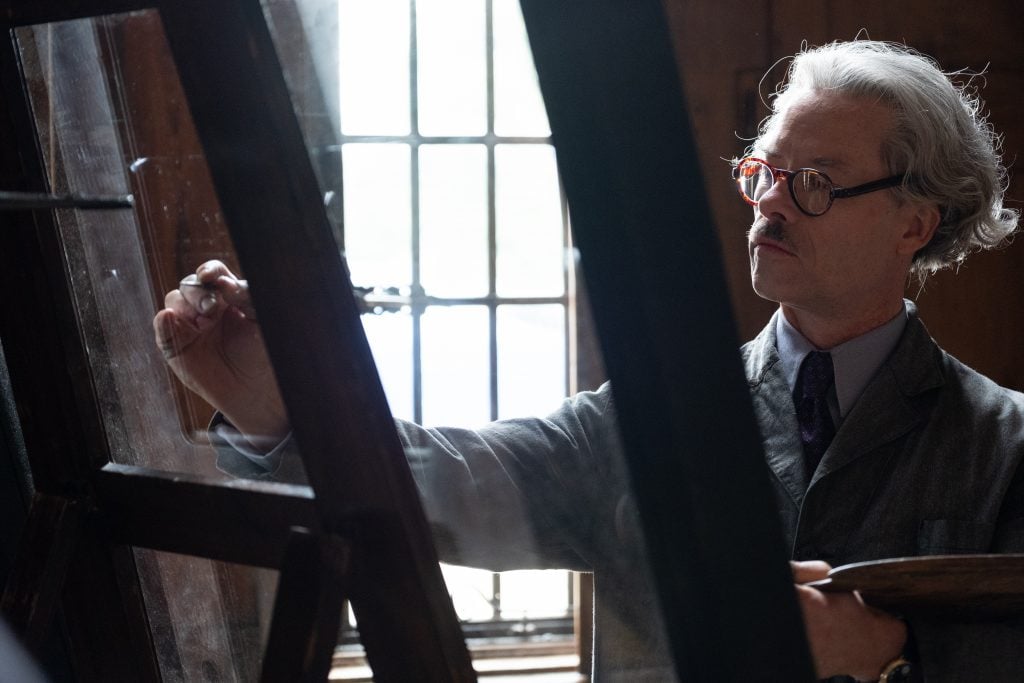
Guy Pearce plays the forger in "The Last Vermeer."

Karen Chernick

Fifty. That’s how many prop paintings it took to make The Last Vermeer, the cheekily titled new film telling the true story of a (very) late “Vermeer” painted in 1942 by the notorious art forger Han van Meegeren.
In other words, it took 50 fake fakes. That’s more than the criminally convincing painter made in his lifetime—but then again, his fame was never about how many Dutch Old Masters he fabricated. Rather, it was about who he swindled into buying a phony Vermeer.
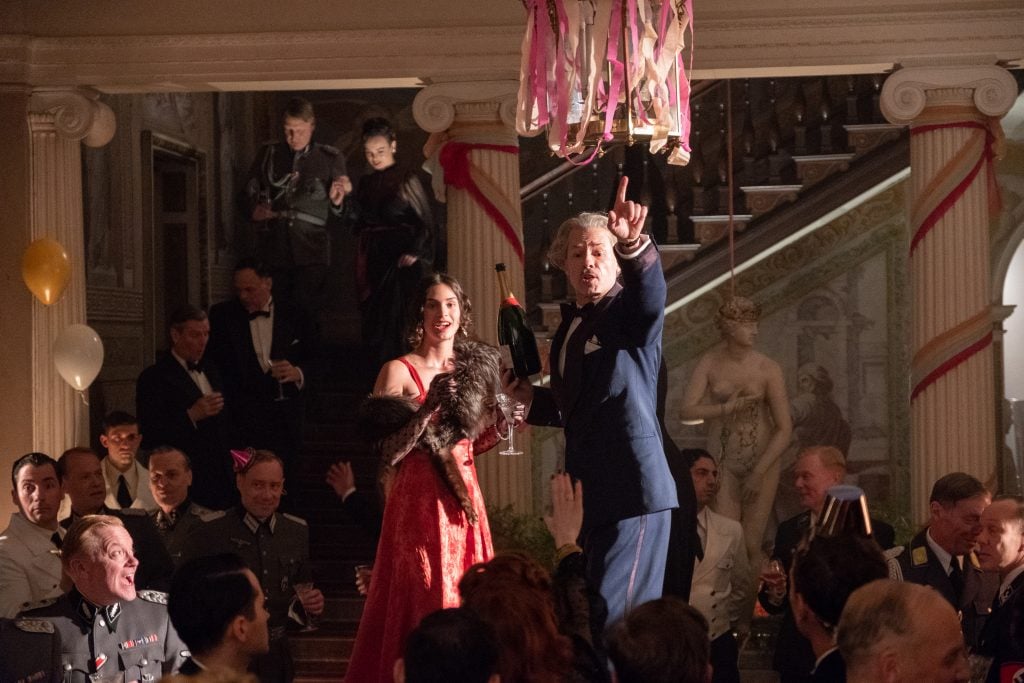
Guy Pearce as notorious art dealer and hedonist Han Van Meegeren. Photo By: Jack English. Copyright: ©2020 CTMG. All Rights Reserved.
Guy Pearce plays Van Meegeren in the film (it will be released in America on November 20), which focuses in part on the knock-off that the forger is most famous for: Christ and the Woman Taken in Adultery.
The work was bought by Nazi Reichsmarschall Hermann Göring, who thought he’d traded up when he exchanged 137 looted paintings for the rare Vermeer. At the time, it was believed that there were only 34 authentic Vermeer works in existence, but Göring did not know that that figure had been padded by at least 11 Vermeers à la Van Meegeren.
Allied forces found Göring’s fake Vermeer in an Austrian salt mine after the war, and traced its provenance back to Van Meegeren in Amsterdam. The forger then had a choice: surrender to a death sentence as a Nazi collaborator who sold a Dutch masterpiece to Hitler’s second-in-command, or confess—and become a sort of national hero in the process. Van Meegeren chose the latter, admitting that he duped the fascist for an embarrassingly exorbitant sum.
Deception was Van Meegeren’s pièce de résistance, and it took all kinds of Hollywood trickery to bring his forgeries to the silver screen.
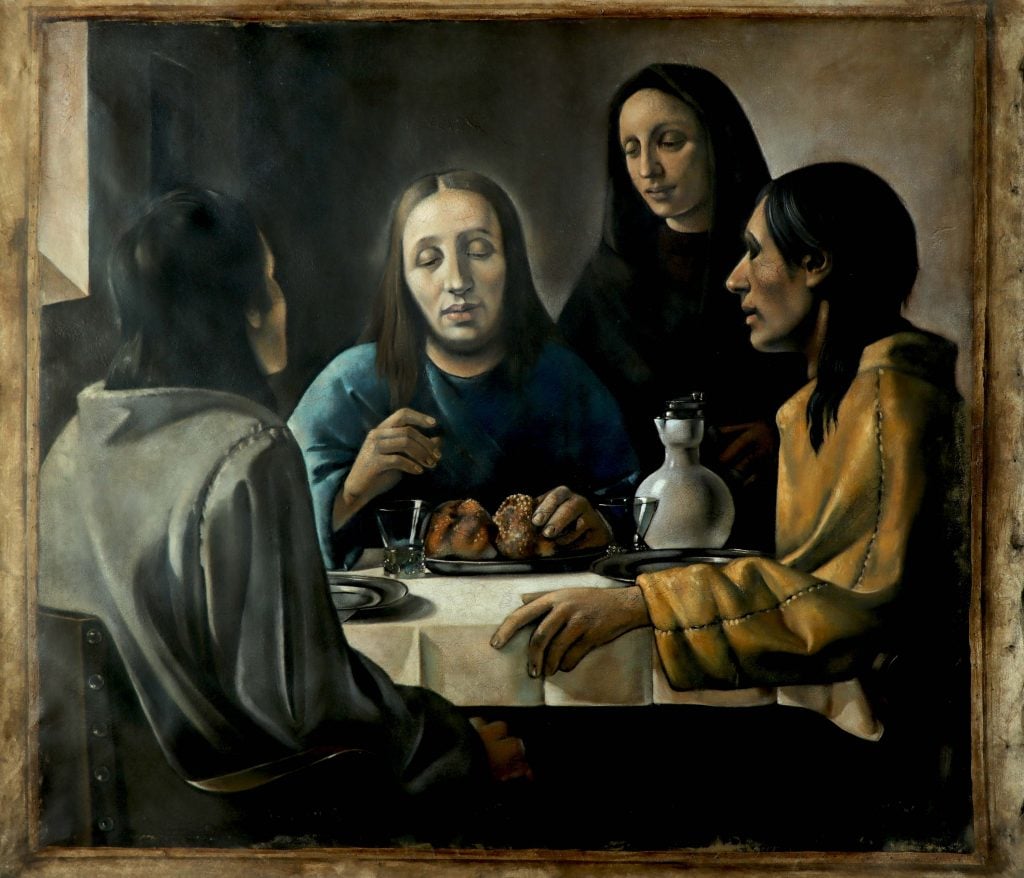
Prop copy of Supper at Emmaus by James Gemmill. Courtesy of the artist.
“Not everything is black or white,” Dan Friedkin, the director of The Last Vermeer, told Artnet News. “And this whole idea of what constitutes art, that was the most important part.”
Scenic painter James Gemmill (whose past projects include The Da Vinci Code) painted Van Meegerens from photographs and then coated the artworks in a white chalk-based paint so that they’d resemble blank canvases.
In the film, when Pearce looks like he’s painting, he’s actually brushing an oily medium over the chalk layer to expose underlying paint. “That’s how we were able to do it without cutting away,” Friedkin explains. “We were able to film the brushstrokes and see, effectively, the impression of a painting being painted.”
More information was gleaned from mid-century court documents, which record that Van Meegeren was asked to forge a Vermeer during his trial. The film tracks this episode, in which the forger painted an expert-baffling false Vermeer from a preliminary sketch. To shoot the progress of the artwork, filmmakers needed six prop paintings in various stages of completion.
But just as Van Meegeren took creative license with Vermeer’s Biblical oeuvre, James Gemmill and production designer Arthur Max (of Gladiator and American Gangster) tweaked the forger’s fraudulent works. Gemmill insisted that some were so bad that audiences wouldn’t be hoodwinked as easily as Göring.
“Sometimes James said to me, ‘I can’t believe that anyone would believe these hands were painted by Vermeer. I’m gonna make them better.’ I said ‘go right ahead, I agree with you,’” Max told Artnet News. “Why let history stand in the way of a good film?”
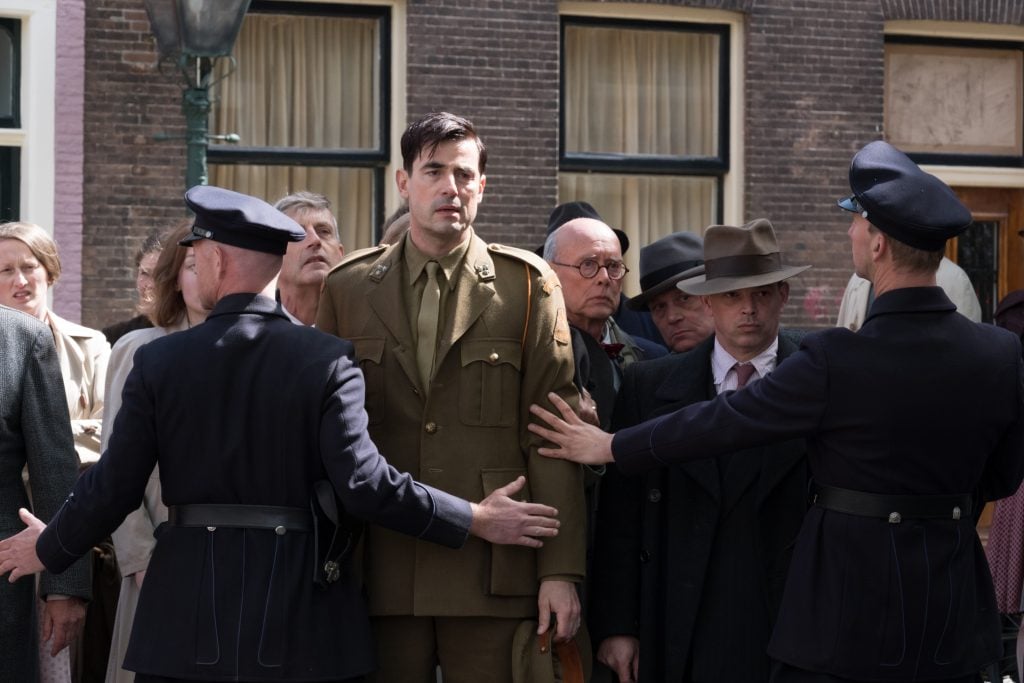
Claes Bang as Joseph Piller. Photo By: Jack English. Copyright: ©2020 CTMG. All Rights Reserved.
Some hands and faces were improved for anatomical (albeit not historic) accuracy, and the cast of characters in Jesus Among the Doctors was amended to include the cast of The Last Vermeer. (Claes Bang plays Joseph Piller, a Dutch Resistance veteran who championed Van Meegeren and appears as a figure on the left of the painting.)
This insertion of contemporary characters into Baroque paintings winks at Van Meegeren, who used his mistress as a model in a forgery that resembles Vermeer’s famous Girl with the Pearl Earring.
Gemmill admits that he developed a certain affinity for Van Meegeren, since both men supplemented the income from their own artistic practices by expertly copying the work of others.
“I feel that I could almost recreate anything, and I just want it as good as possible,” says Gemmill.
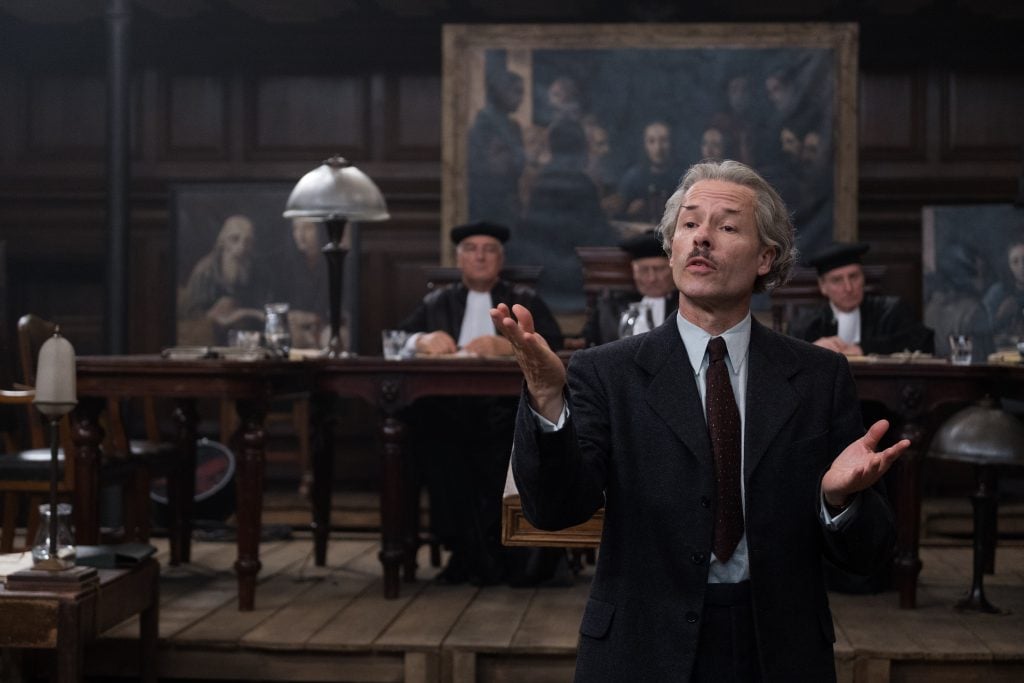
Guy Pearce as notorious art dealer Han Van Meegeren. Photo By: Jack English. Copyright: ©2020 CTMG. All Rights Reserved.
Van Meegeren likewise felt that quality was the most important thing. “Yesterday this painting was worth millions of guilders and experts and art lovers would come from all over the world and pay money to see it,” he famously said at his trial in 1947. “Today, it is worth nothing and nobody would cross the street to see it for free. But the picture has not changed. What has?”
This sentiment resonates with Friedkin, who is comfortable with the blurry lines that differentiate the works of Vermeer, Van Meegeren, and Gemmill.
“There’s great art that has zero notoriety,” he says. “Who’s to say that this artist is better than another?”
At least two versions now exist of Van Meegeren’s infamous Christ and the Woman Taken in Adultery.
One is currently on view at the House of European History in Brussels, as part of an exhibition about the history of forgery and falsification.
The other is in Friedkin’s office.